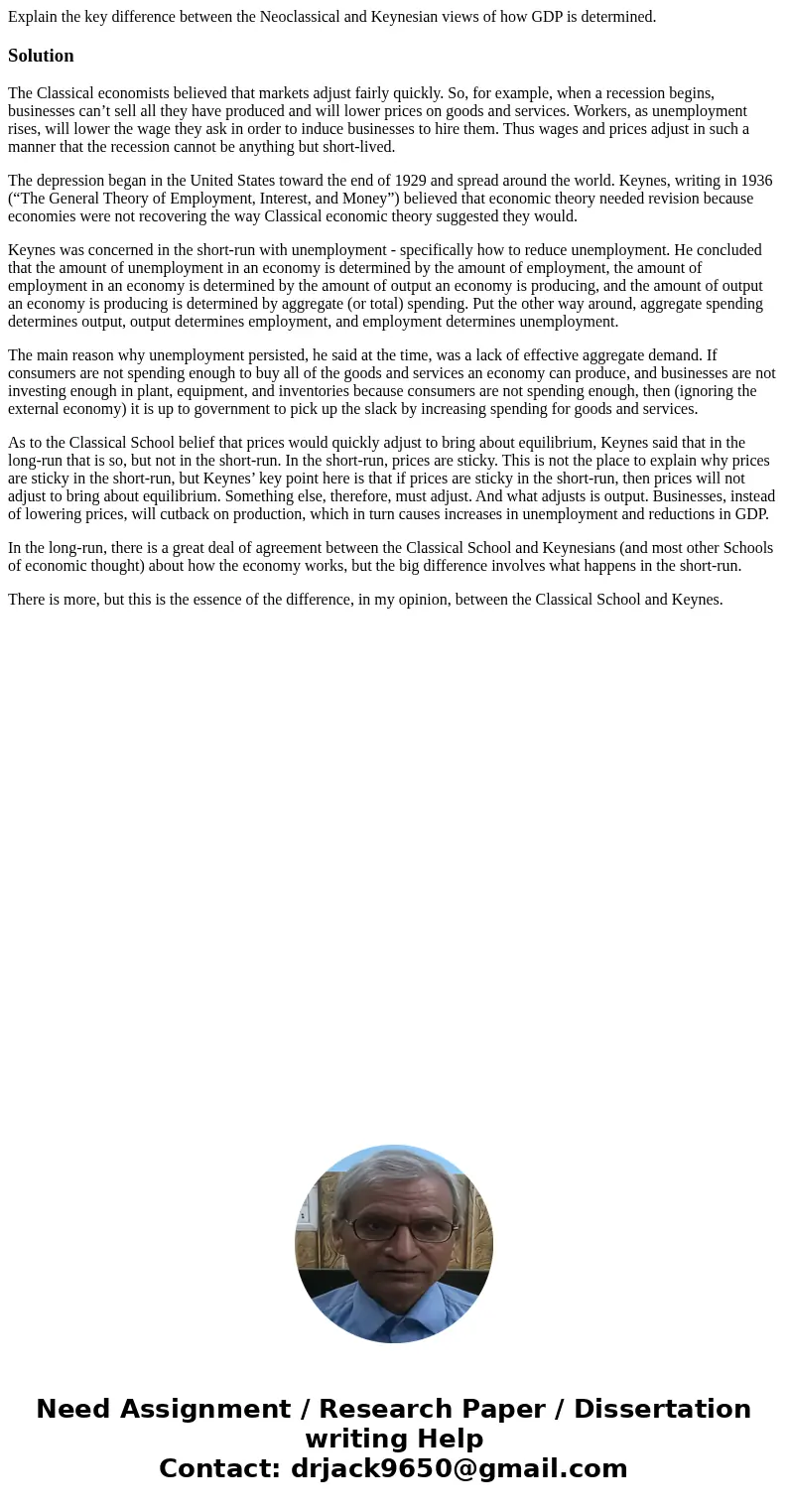Explain the key difference between the Neoclassical and Keyn
Explain the key difference between the Neoclassical and Keynesian views of how GDP is determined.
Solution
The Classical economists believed that markets adjust fairly quickly. So, for example, when a recession begins, businesses can’t sell all they have produced and will lower prices on goods and services. Workers, as unemployment rises, will lower the wage they ask in order to induce businesses to hire them. Thus wages and prices adjust in such a manner that the recession cannot be anything but short-lived.
The depression began in the United States toward the end of 1929 and spread around the world. Keynes, writing in 1936 (“The General Theory of Employment, Interest, and Money”) believed that economic theory needed revision because economies were not recovering the way Classical economic theory suggested they would.
Keynes was concerned in the short-run with unemployment - specifically how to reduce unemployment. He concluded that the amount of unemployment in an economy is determined by the amount of employment, the amount of employment in an economy is determined by the amount of output an economy is producing, and the amount of output an economy is producing is determined by aggregate (or total) spending. Put the other way around, aggregate spending determines output, output determines employment, and employment determines unemployment.
The main reason why unemployment persisted, he said at the time, was a lack of effective aggregate demand. If consumers are not spending enough to buy all of the goods and services an economy can produce, and businesses are not investing enough in plant, equipment, and inventories because consumers are not spending enough, then (ignoring the external economy) it is up to government to pick up the slack by increasing spending for goods and services.
As to the Classical School belief that prices would quickly adjust to bring about equilibrium, Keynes said that in the long-run that is so, but not in the short-run. In the short-run, prices are sticky. This is not the place to explain why prices are sticky in the short-run, but Keynes’ key point here is that if prices are sticky in the short-run, then prices will not adjust to bring about equilibrium. Something else, therefore, must adjust. And what adjusts is output. Businesses, instead of lowering prices, will cutback on production, which in turn causes increases in unemployment and reductions in GDP.
In the long-run, there is a great deal of agreement between the Classical School and Keynesians (and most other Schools of economic thought) about how the economy works, but the big difference involves what happens in the short-run.
There is more, but this is the essence of the difference, in my opinion, between the Classical School and Keynes.

 Homework Sourse
Homework Sourse